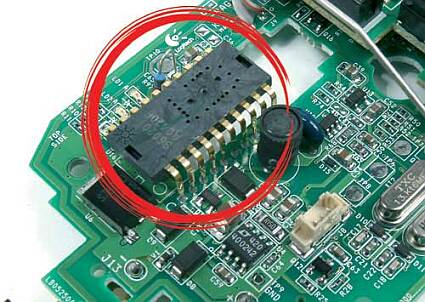The Ultimate Mouse Hunt
Sending Photos Home
The lenses that concentrate the image on the sensor also have an influence since - as is the case with photography - the quality of the optics contributes to the sharpness of the picture by avoiding distortion of the original image. The sensor itself is what takes the picture, so it too has its importance. The more sensitive it is, the more pixels it exposes to the image and the better the picture will be. Of course, when we talk about "photos" or "images," we're not talking about making a high-resolution color print. We simply mean reading the specificities of the surface over which the mouse is moving to determine its movement by comparing the successive images.
Teamwork
This cooperation of a group of components results in a "photograph" that above all must reflect the structure of the surface under the mouse by pointing out its irregularities. Obviously higher-quality components will produce a better image, which will result in a better interpretation of that surface. So keep in mind that laser is more precise than an LED, that quality lenses won't distort the image and that a more sensitive sensor will create a better image. Currently, the most highly developed system is the one designed by Agilent Technologies in collaboration with Logitech. It uses laser illumination and a 30 x 30-pixel CMOS sensor operating at 7,000 images per second.
Get Tom's Hardware's best news and in-depth reviews, straight to your inbox.
-
Ephebus Stay away from this mouse. I've had two, and both started double clicking with the left button after about a year. Logitech's forums are full of topics on this issue. The latest versions of the G7 also showed a regrettable decrease in manufacturing quality - my first mouse had a rubber coating around it (release A0), while on my second G7 (release A2) it was replaced by cheap plastic. Issues with the receptor dongle losing connection with the mouse are also frequent, and Logitech will go to great lengths to avoid honoring their 3-year warranty.Reply

